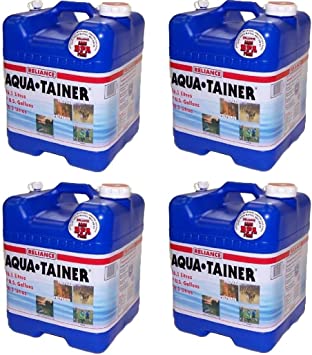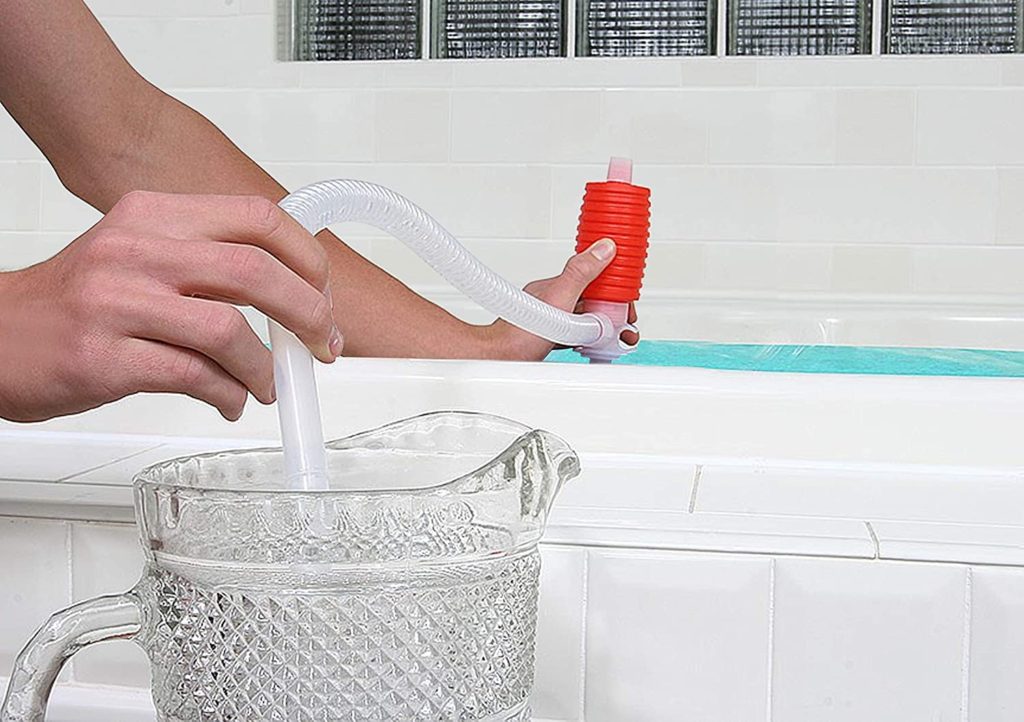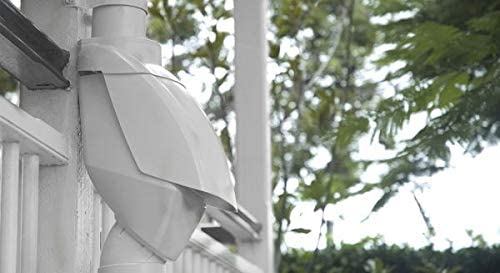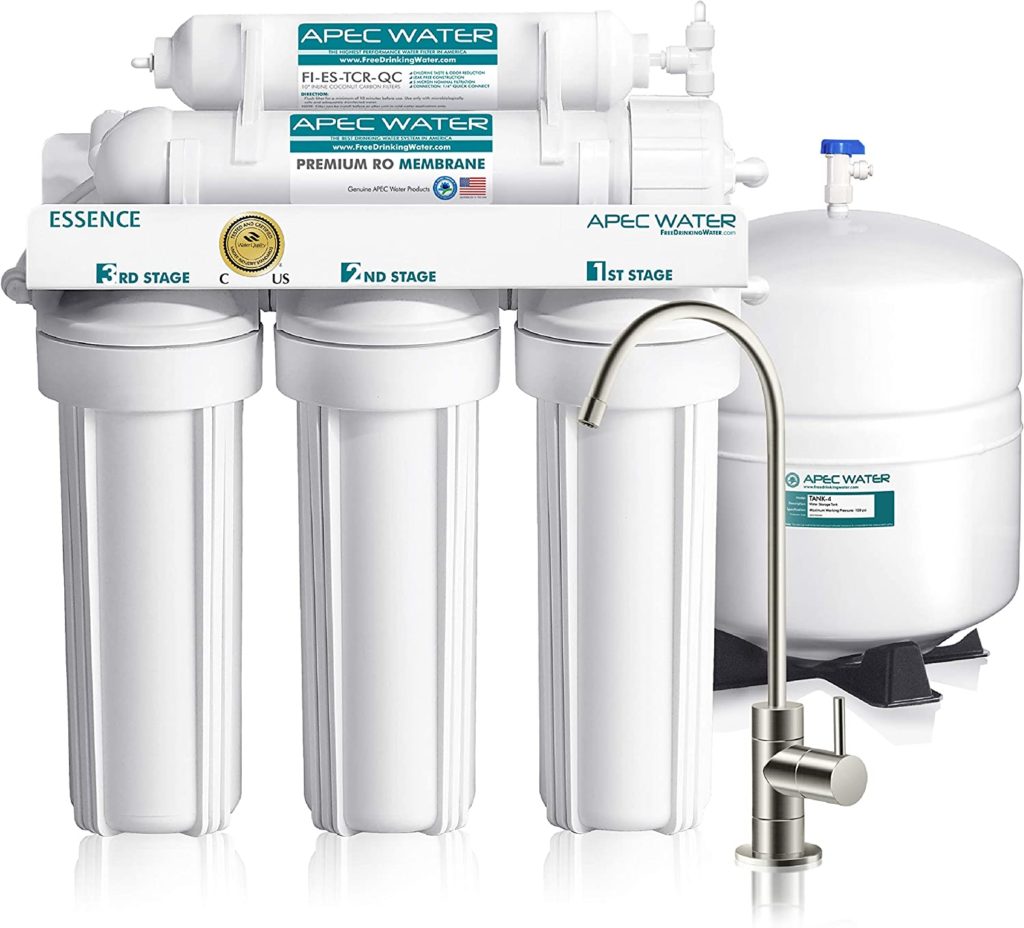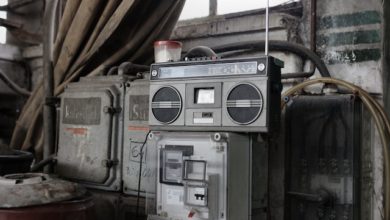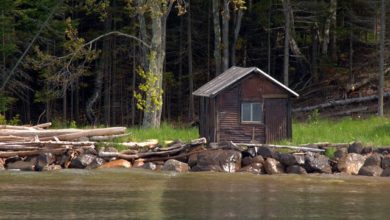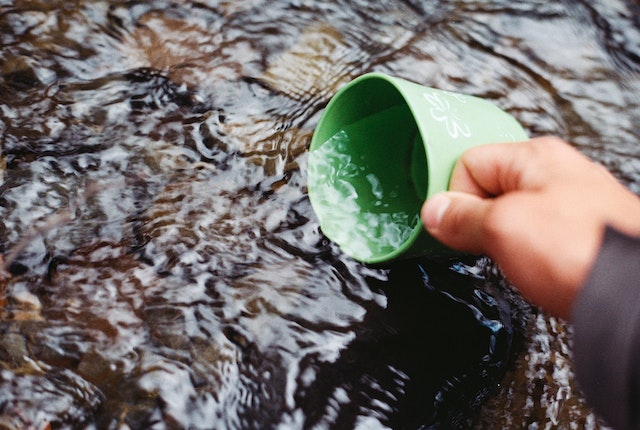
Prepper Water Storage
A vital part of an excellent preparedness strategy involves having a well-stocked and diversified water storage plan. You can die within just three days if you do not have access to water.
Additionally, there are likely to be fatal consequences should you decide to drink water from contaminated water sources. Therefore, having an appropriate amount of water for you and your loved ones instore is necessary if you are a prepper.
Filled potable water containers and packages of bottled water are a great way of storing water in your home as a prepper.
Moreover, storing water in barrels and cisterns plus even developing rainwater harvesting systems or digging wells are excellent ideas done by more serious preppers.
You need both stored water and the means to replenish your water supply when developing a water storage plan. Some ideas that can make sure that you have a good prepper water storage plan are as follows:
I. How Much Water Should a Prepper Store?
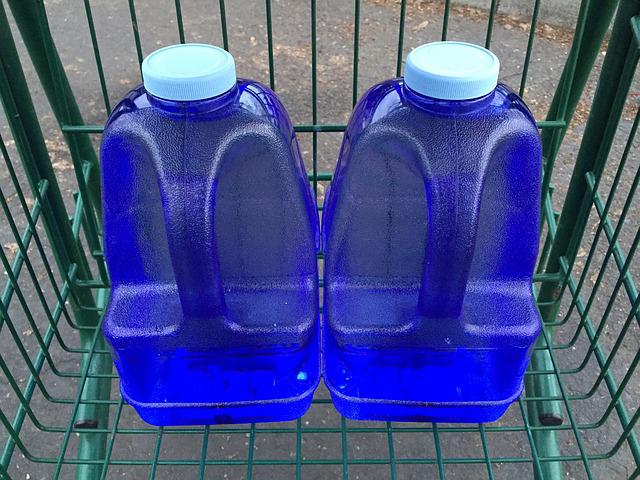
You need to have a clear idea of how much water you will need before starting to develop an excellent storage plan. One gallon of water per person per day is the general rule within the prepper community for water storage.
Water Needs = (1Gallon) X (Number of People) X (Number of Days)
This does not give a clear picture or true representation of the amount of water you will actually need despite being a good starting point.
The amount of water you need to drink is what this general rule within the prepper community for water storage takes into consideration. Personal sanitation or even cooking water is not included in the general rule.
For example, you will need water to prepare freeze-dried foods if you plan to eat them during an emergency. Therefore, the amount of water you need to store needs to increase.
Your climate area is another factor that is likely to increase the amount of water you need to store.
Your body will lose more moisture from sweating and therefore making it necessary to store more water if you live in a hot area. A grid-down situation would knock out air conditioning hence increasing your need for water to keep your body cool even if you stay indoors as much as possible in a hot area.
II. Store More Than You Think You Need
Things probably will not go as planned especially during an emergency. Storing more water than you may need is an excellent idea because this. Having a backup plan is good since water sources may become contaminated and your storage containers may become damaged.
Moreover, a water storage plan is in the minds of a great number of persons who live next to a lake or any other water body. This storage idea is likely to be in the minds of many other people.
You may need to avoid sources such as lakes and other water bodies should there be civil unrest or conflict in your area.
The amount of time you have to spend at places like these will reduce when you have a large amount of water stored on your property.
III. Don’t Forget Water for Your Pets
The needs of your pets are another important thing you need to consider when developing a water storage plan.
For example, if you have two dogs, there are likely to need water every day depending on the climate too. One of our dogs is a Labrador retriever and it requires at least half a gallon of water each day to drink.
The other dog is a Chihuahua and it needs at least a quarter gallon to drink every day. This is a situation when your dogs live inside all day except during bathroom breaks plus when they live a fairly sedentary life.
However, your pets will require much more water when they are active and outside. If you rare the larger dogs, they would require around 2 to 3 gallons of water per day especially if you live in an area with a hot climate.
IV. Prepper Water Storage Breakdown
- Bottled Water (1 – 2 Weeks)
Bottled water should be the first layer for your prepper water storage for emergency use and you should store a quantity that can last you for one or two weeks.
Your two-week emergency supply should be in addition to what you keep for normal use especially if you use bottled water regularly.
For example, if you normally use 1 or 2 cases of bottled water every week, you should have at least two cases for normal use ready to go.
A two-week water supply would require 4 cases of bottled water based on your normal use. This means you will require a total of 6 cases to last you a normal week and have a supply for two weeks set aside.
It is advisable that you rotate your store when storing bottled water since the thin plastic used by companies in making their bottles is not ideal for hard use or long-term storage.
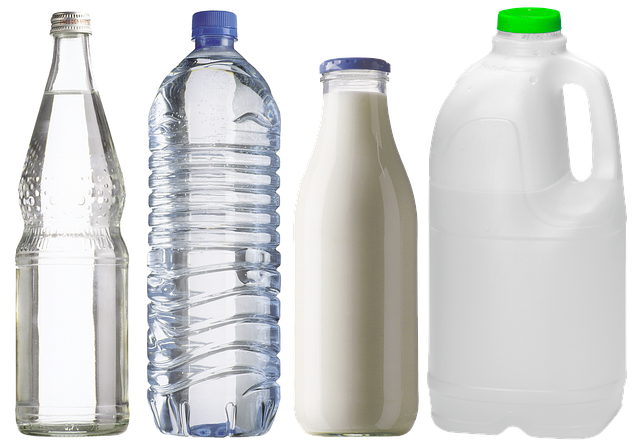
Therefore, you should not store any case of water in your prepper pantry for more than one month before using it. Despite bottled water is convenient and portable, you should not consider them as the backbone of your prepper water storage.
Bottled water is a good barter item and you can hand it out if you want to help someone especially when you have them in large quantities.
- Avoid Gallon Jugs
Gallon jugs are not the best means that you can use to store water in your prepper pantry despite them being a cost-effective way of storing water. They are not the best way of storing water because you cannot stack them.
Storage space is very important and as a prepper, you should use your storage wisely. When you have gallon jugs in your storage, they will occupy much space since you will not be able to stack them. Therefore, it will lead to the amount of water you store in your pantry being reduced.
Further, being extremely flimsy is another issue with the gallon jugs of water. There can easily get raptured, hence leading to the water inside becoming a complete waste. Compared to individual bottles where when one or two bursts you have not lost much plus cleaning it up is also not much.
- Portable Water Storage Containers (1-2 months)
Good Portable water containers can hold around 5 to 7 gallons hence making them an excellent addition to any prepper water storage plan.
Most people may not be able to move portable water containers that are larger than 7 gallons since they are too heavy. One of the best portable water containers that you can use is the Reliance Aquatainer.
Despite most preppers preferring the jerrycan design, the water brick is another common and good option.
Transportation and easy storage are one of the advantages of most portable water containers such as Aquatainer. You can easily pack them in your car especially when you are going on long road trips.
Besides, if you are going somewhere far, you can pack a 7-gallon Aquatainer which can last you for three and a half days when you are traveling as a couple using the one gallon per day policy.
How To Store Water Containers
You can store your Aquatainers on the shelves in your laundry room or out of the way in the pantry in your home. After every six months, it is advisable that you empty and rinse your water storage containers. Doing this will help in reducing the chances of the growth of certain bacteria and algae in your water containers.
How Much Water Should You Store in Containers?
Water is among the things you need to survive whether emergency or not. If you want to be safe and with peace of mind, it is advisable that you store water in containers that can last you for a period of between one to two months.
Additionally, it is best if you store the water in portable containers so that in case of an emergency, and you have to bug out you can easily load some of them and take them with you.
Moreover, it is good if you have multiple containers in your prepper pantry so that you can keep track of how much water you have used.
Store water at the beginning of an emergency: WaterBOB or Aqua Pod
An excellent tool that you can use to store or supplement water in your storage is a bathtub, a WaterBOB, or Aqua Pod. You can use your tub’s faucet to fill both products (Aqua Pod or WaterBOB).
Since both the products are large plastic bladders that can fit inside your bathtub, you can fit the inside after filling them with water from the tub’s faucet. Once fill up both the products with water, they will expand to fit the shape of your tub.
To help prevent rupturing, the structure of the bathtub reinforces the water bladder. Apart from simply filling your tub with water, these are a much better option.
This is because, the large plastic bladders will help in protecting your water from getting contaminated by bacteria, chemicals, belly button lint, and any other grossness that may be lurking in your tub during storage.
Despite such systems being great, they have some disadvantages. The drawbacks include:
- They are single-use products. Both Aqua Pod and WaterBOB are supposed to be used as a temporary reservoir.
You only need to fill them once, use the water and once you have emptied them, you need to throw them away. You should not store these products after use since bacteria will grow in them and that may not be safe for your health.
- If you are to use these systems, it is a must that you fill them before an emergency or during the early stages of a crisis. It will not do you any good having such systems with you if you do not do so or if you do not have time for filling them.
Additionally, you will waste them if you fill them up unnecessarily. The use of Aqua Pod and WaterBOB are still great additions to your water preps even with these multiple drawbacks. Despite both the WaterBOB and Aqua Pod taking up very little space prior to use, they can hold several weeks of water.
Water Storage Barrels or Tanks (3+ Months)
Water barrels or tanks are a great addition to your prepper water storage if you have enough space in your home.
They have a large capacity and allow you to store water long-term despite them being very expensive.
There are small barrels or tanks that are small enough and you can even fit them in the corner of your garage. Sizes that can easily fit in a corner in your garage include 55-gallon and large capacity water tanks, such as WaterPrepared 160 – 320 Gallon Capacity Emergency Water Storage Tank.
There are huge storage tanks that can hold a few thousand gallons of water such as Water cisterns. They are buried underground and are frequently tied to a rainwater harvesting system for irrigation purposes.
It is very important that you choose the right ones if you are considering purchasing containers that are large.
One thing to keep in mind. Whichever water barrel or tank you choose should be BPA free and be made of Food Grade Plastic.
You also ensure that the container has never been used to store chemicals when buying a used container. This is because chemicals can be easily embedded into the plastic despite plastic being porous.
To prevent the growth of bacteria or algae that may harm your health, the water stored in barrels or tanks should be treated.
When treating the water stored in barrels, you can either use water treatment drops like H2O ResQ Biofilm Defender or bleach. It is advisable that you use two drops per quart or liter when using bleach.
You should follow the instructions on the packaging when using water treatment drops.
One of the reasons I prefer H2O ResQ Biofilm Defender is that one package treats up to 330 gallons of water.
It may not be necessary to do any treatment when you are storing tap water however, there is no harm in trying either.
Rainwater Harvesting System
Using a rainwater collecting system is among the best ways to store water. Even though a whole system can be very expensive, you can start small without spending a lot of money. One barrel can be mounted on a downspout, and if money permits, other barrels can be added to the system.
This is a relatively affordable approach to start expanding your water stockpile for emergency situations. It would be an excellent choice for long-term water storage and regeneration if you reside in an area with plentiful rainfall.
Be sure to check your state and local laws prior to installing a rainwater harvesting system.
This is because water harvesting is not allowed in some states such as Colorado, if you have to harvest water in such states, you have to get a permit.
Additionally, be sure to treat the water first especially if you intend to drink it from your system.
Treating the water first is essential because there are multiple contaminants that may be on your roof such as bird poop.
And since the rainwater comes from your roof, it may carry along the contaminants through the slim gutters before being stored in a barrel. Before using such water, it is also advisable that you purify it.
Rain harvesting systems also work well for garden irrigation apart from providing excellent drinking water.
This may be accomplished by using a rainwater harvesting system, which would allow you to maintain your garden without using up your drinking water reserves.
Quick And Cheap Rainwater Harvester
You can rig one together fairly quickly, if necessary, even if you cannot install a full rainwater catchment system. Some tarps and plastic storage bins are all you will need to do this.
The tarps should be spread out and angled to resemble a roof. Placing the plastic tubs underneath will allow water to drip into the tub from the tarp.
Well (Indefinite)
Wells are probably the best long-term water storage option. Having a well on your property will allow you to be independent of a municipality’s water supply.
Wells are mostly used as the primary water source in most homes for families that do not consider themselves preppers.
Most of the persons that do not consider themselves preppers are those who do not have access to a city water and sewer system especially those who live in rural areas.
There are a few drawbacks of having wells despite having a private water supply being great.
- If you have a well, you are at the whim of any significant mineral concentrations that may exist in your soil.
Because of the high iron concentration of the location, for instance, I have been in places where I exit the shower smelling like rust. It is probably a great idea to have filters installed on your shower heads and faucets, especially when using well water.
- The majority of people who own properties with wells typically think that their water demands will be met in an emergency.
What you should know especially if you have a well in your home is that there are chemicals and other contaminants that can contaminate underground water sources.
Therefore, you should be wary of this and not fall into the trap. Having additional clean water stored in portable containers or barrels in your home is a great way to be safe in case of an emergency or crisis.
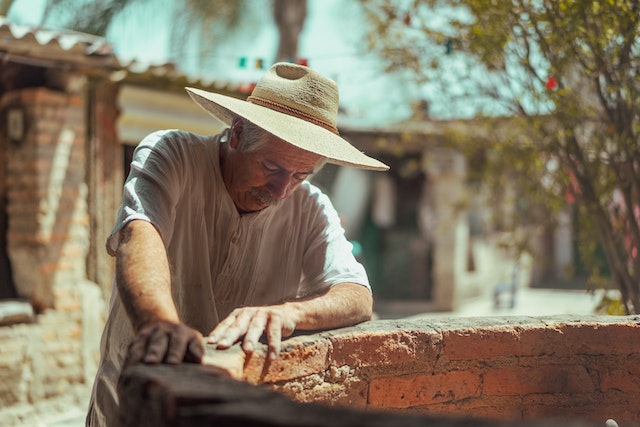
- In case you are no longer able to use the electric pump that would normally move the water from the well to your home, it is a great idea to have a mechanical well pump.
Make sure you are familiar with installing and using your mechanical pump before you attempt this.
Make sure you have the necessary resources on hand in advance because you won’t be able to hurry to Home Depot or Lowes to pick up tools and supplies during an emergency.
Other Water Sources
1. Ponds, Lakes, Creeks, and Rivers
It is a good idea to know where large man-made or natural water sources are as a prepper. Ponds, lakes, creeks, and rivers are some of the large man-made or natural water resources. However, using these water sources come with some risks despite them being valuable to you and your family.
During a disaster, these water sources are likely to be filled with biological and chemical contaminants and therefore you should remember that.
Additionally, people may use these water sources as dumping grounds for human waste, for cleaning their clothes, and even for bathing.
You will therefore need to carefully and thoroughly purify any water you have retrieved from these water sources.
2. Hot Water Heaters
Do not forget about your hot water heater during an emergency. Hot water heaters can contain up to 80 gallons, depending on their size, while the majority hold between 40 and 50 gallons.
You can already drink any water you take out of it. Using hot water heaters is helpful despite being only a short-term solution.
3. Decorative Ponds (Koi Ponds, Fountains)
A decorative pond could serve as a suitable makeshift water source if you have one in your backyard. However, before drinking any water from this source you should purify it first.
Even while little decorative ponds typically don’t store a lot of water, setting up tarps to direct rainwater into them makes it simple to replenish them.
4. Swimming Pool
During an emergency, swimming pools could also be valuable long-term supplies of water. Due to chlorine killing any biological contaminants it may technically be safe to drink water from a pool.
However, it is advisable that you run the water from the pool through some sort of filtration system first before drinking. Running the water through some sort of filtration system will help in getting rid of chlorine as much as possible.
Besides, a swimming pool may turn into a backyard bog during a prolonged emergency. Electric pumps and other technologies are needed to maintain the cleanliness of modern swimming pools.
Over time, the current chlorine will likewise become less effective. Therefore, be sure to have a good filter if you are planning to on using a swimming pool as a water source.
Normal filters will not work if your pool uses saltwater hence to make your water pool drinkable, you would need to use a desalinator.
Water Filtration
You still need to have the ability to filter and purify water, if necessary, even if you have thousands of gallons of clean water stored.
I currently use the APEC Water Systems ROES-50 Essence Series Top Tier 5-Stage Certified Ultra Safe Reverse Osmosis Drinking Water Filter System. It’s highly rated and under 200 bucks.
It is a powerful water filter that can remove up to 99.99% of viruses and chemicals. This water filter can remove viruses, chemicals, heavy metals, and other contaminants, unlike other filters that only remove bacteria, sediment, and large particles.
Conclusion
Having as many of these options as possible will help keep you and your loved ones alive during an emergency despite it not being possible to add all these options to your prepper water storage plan.
Just be sure that you have clean water stored and the ability to procure and purify more.
